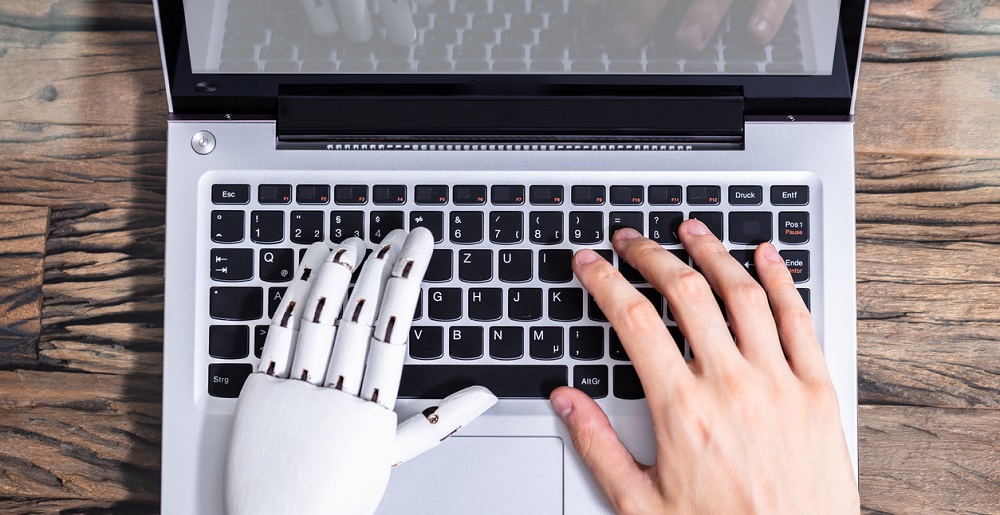The US Copyright Office publishes new guidelines for the registration of AI- generated works
Cristina Mesa, partner of Garrigues IP Department.


The US Copyright Office’s (USCO) guidance on artificial intelligence clears up the doubts that existed when protecting works generated with (or by) artificial intelligence systems, confirming that human intervention is always necessary. To facilitate this task, the guidance published explains how applicants should identify the use of artificial intelligence (AI) system and differentiate its results from those of human creation.
The US Copyright Office (USCO) recently cancelled the registration of the images in the comic Zayra of the Dawn on the grounds that it was not the fruit of human creation, but rather of AI, as we discussed here. As a result of this and other decisions, the USCO has decided to publish Copyright Registration Guidance to register works containing material generated by artificial intelligence by (or with) AI (link) which clarifies when AI-assisted works can be registered and how to apply for registration.
The “human authorship” requirement
The USCO refers to works generated by AI as “expressive” materials, defining the results as outputs generated by AI, which, had it been created by a human, would be protectable under copyright registration. The truth is that the Office talks of ‘‘generative” AI tools, in what appears to be a clear resistance to speak of “creativity”.
The problem in registering these works is that the Copyright Act only protects works of authorship which, according to case law, are works created by humans. Burrow-Giles Lithographic Co. V Sarony 111 U.S. (1884) already defined an author as ‘‘he to whom anything owes its origin; originator; maker; one who completes a work of science or literature’’ adding that copyright is “the exclusive right of a man to the production of his own genius or intellect”. Barring gender issues, this principle remains to this day. The Compendium of US Copyright Practices of 1973 (and 1984) consistently states that works that “‘do not owe their origin to a human agent will not be registered. Indeed, its current version, from 2021, affirms that it ‘‘will not register works produced by a machine or mere mechanical process that operates randomly or automatically without any creative input or intervention from a human author’.
Therefore, what this guidance tells us is that, if works do not have any elements of human creation, they will be rejected. The USCO uses prompts as an example and explains that if all that is provided to the AI is a prompt for the AI to produce an output (i.e., textual visual or audio), the traditional elements of authorship are determined and executed by the technology, not the human user. In this context, and bearing in mind existing technology, the US office considers that such works cannot be registered because the human does not exercise creative control over how AI interprets the prompts:
“[these prompts function more like instructions to a commissioned artist; they identify what the prompter wishes to have depicted, but the machine determines how those instructions are implemented in its output”.
Specific guidance
As a result of applying the principles underlying copyright legislation and case law interpreting those principles, the USCO offers us the following guidelines:
- Applicants seeking registration of AI-assisted works must state this in their application and explain the human contribution to the work. For example, in the case of AI-generated texts that form part of a larger textual work, the specific portions that are human-authored must be identified.
- In the case of works that consist of selections of works created by humans and AI-generated works, it is necessary to specify who has coordinated the works and which works have been created or generated respectively by humans or AI.
- There is no obligation to name the AI or the company that offers the services as authors or co-authors (naturally with the exception of the acceptance of the relevant terms and conditions of use).
- If the AI-generated content is minimal, it does not need to be identified. For example, it is not necessary to identify the use of AI if we are dealing with a quote or short phrases.
- In the case of applications in progress, it is necessary to correct the information and identify which parts of the work to be registered have been created by humans and which haven’t.
- Finally, in the case of works that have already been registered, a supplementary registration should be filed indicating which part of the work has been created by humans. If the holder of the registration does not do so they may end up losing the benefits of such copyright.
Coming up…
As the USCO indicates, the office is keeping an eye on technological progress and is aware that such progress may change current policies, but for the time being, this is the guidance we should follow.
I am very curious about these “other matters” in which the USCO is involved, and specifically, its public consultation on how to deal, from a legal standpoint, with the use of copyright-protected works in training AI and their output. We’re watching with interest!